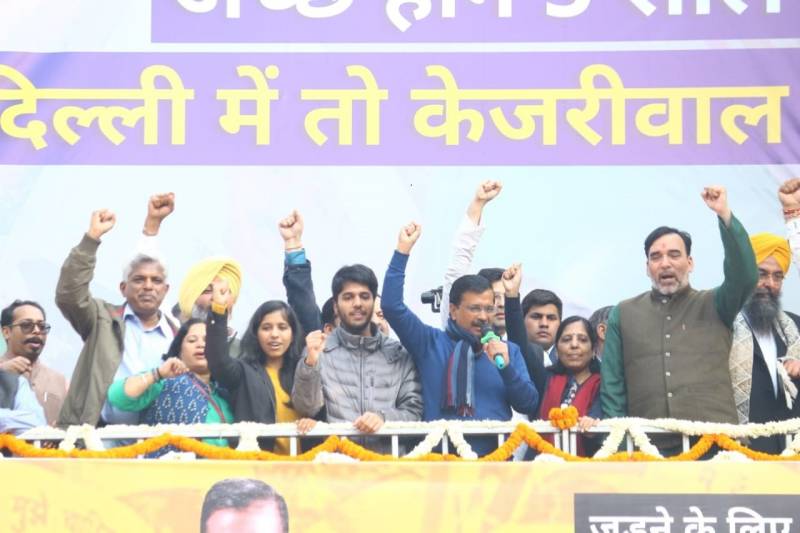What went wrong in Delhi? 22 year-old jinx for BJP continues
By Jinka Nagaraju
Hyderabad: It is not the win of Aam Admi Party (AAP), but the saffron party’s inability to win back the Delhi even after 22 years. BJP lost Delhi in 1998 to Congress when its Shiela Dikshit defeated BJP chief minister Sushma Swaraj. The party could not recover the lost ground during Vajpayee's era. Now, Modi’s leadership also failed to bring the Delhi back into BJP's fold.
Amid soaring onion prices and internal bickering in the party, the BJP had brought in the then union I&B and telecom minister Sushma Swaraj to lead the party in 1998 elections. A faction led by Madanlal Khurana was in a direct fight with chief minister Saheb Singh Verama whose government became unpopular for many reasons. Having smelt the prospect of losing the election, the panicked BJP central leadership thought Sushma would be the best bet to counter the looming threat from Congress’ Sheila Dikshit.
Sushma was appointed chief minister barely two months before the Vidhan Sabha elections. Her mandate was to salvage the situation for the BJP. Sushma made some desperate attempts. She set up onion fair price shops to supply the commodity at cheaper prices. She also promised to supply onions at Rs 5 a kilo if returned to power. These quick-fix solutions didn’t work.
The BJP lost the election. Sheila Dikshit emerged victorious by taking the party’s tally up from 14(1993) to 52. BJP numbers fell from 49 to 15. That was the end of the BJP era in Delhi. Sheila Dikshit led the Congress to power for three times in series. BJP could not beat Congress under Shiela Dikshit’s leadership.
By 2013, Congres's influence was on the wane. The situation was getting favourable for the revival of the BJP. But, like a bolt from the blue, Aam Admi Party (AAP) entered the fray. Though it was its electoral debut, the AAP, which took birth in the anti-corruption campaign led by social activist Anna Hazare a year ago, emerged second-largest party by winning 28 of the 70 seats in 2013.
This means the space being vacated by the shrinking Congress was immediately grabbed by new-born AAP. AAP's Kejriwal formed a minority government with the help of Congress, which proved short-lived. However, when AAP soon realized that it would not get support for its Jan Lokpal bill, chief minister Kejriwal’s government preferred snap polls in 2015. In the mid-term polls, AAP won 67 seats. BJP could win only 3 despite the Modi’s wave across the country.
BJP has tried every trick of the trade to wrest the Delhi Assembly from AAP. First, it tried Harshvardhan, a leader with relative popularity as the chief ministerial candidate in 2013. But it could not win the simple majority and fell short of 4 seats to form the government. Later, the party, which was skeptical of capabilities of its own leaders, roped in Kiran Bedi to lead the party in 2015 mid-term polls. This also did not help BJP. On the other hand, the AAP swept to victory with 67 seats. Kiran Bedi, who contested from BJP bastion Krishna Nagar lost the election with a margin of 2,400.
This 2020, the party unleashed an aggressive campaign against AAP deploying an army of union ministers, MP and other senior leaders. According to the media, the party had organized nearly 5000 meetings and road-shows as part of electioneering. Three leaders including union minister Anurag Thakur were barred by EC from campaigning for the controversial roles. Another union minister Giriraj Singh alleged that suicide bombers were being raised in Shaheen Bagh, while Karnataka BJP MP Tejaswi Surya dubbed the return of AAP as the return of Mughal Raj. UP chief minister Adityanath also added his share of spice by stating AAP was serving biryani to Shaheen Bagh protesters. And above all the campaign was led by none other than Chanakya Amit Shah. Still, all these gimmicks could not alter the situation. The party failed to break the over two-decade-long jinx.